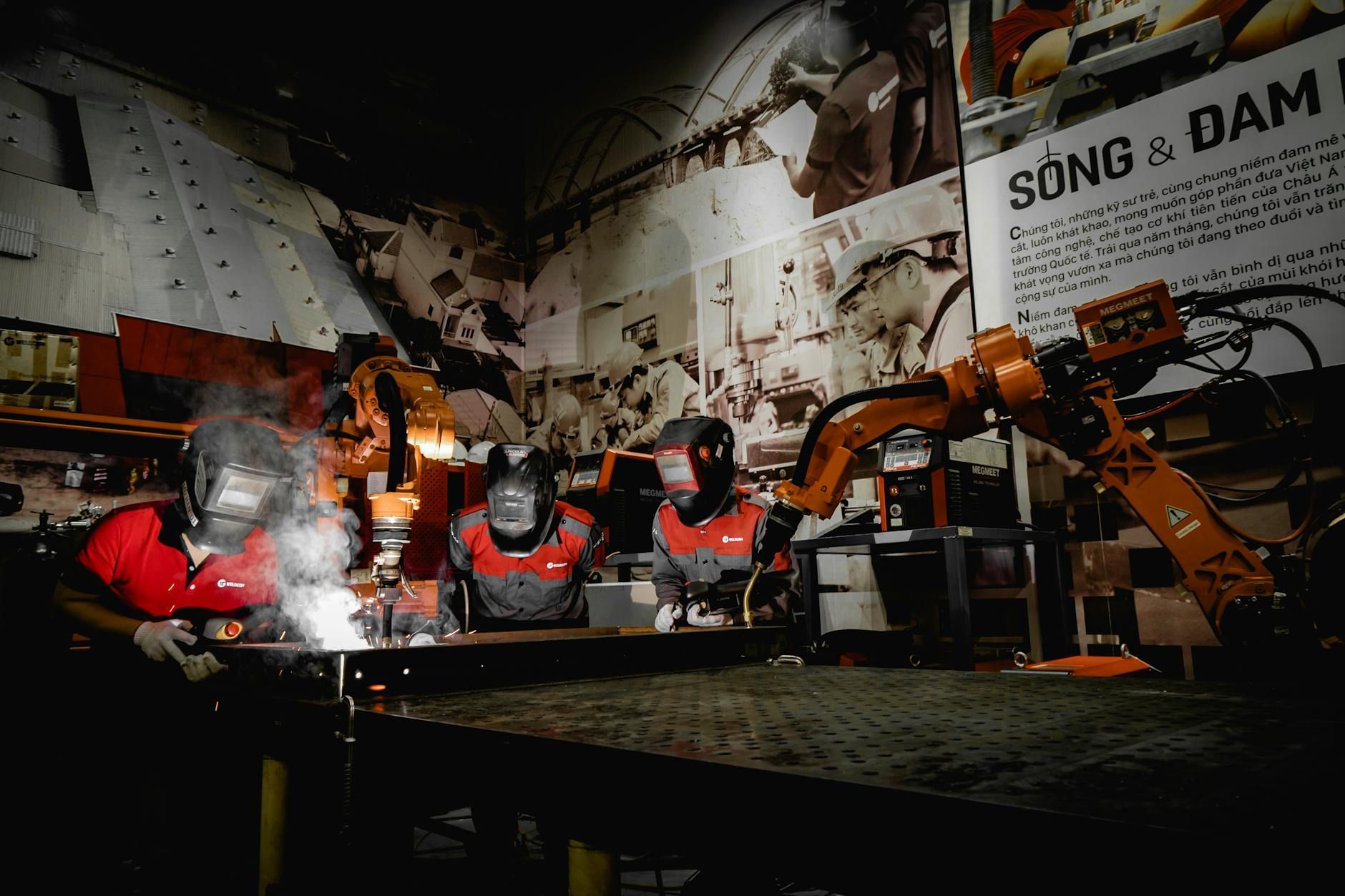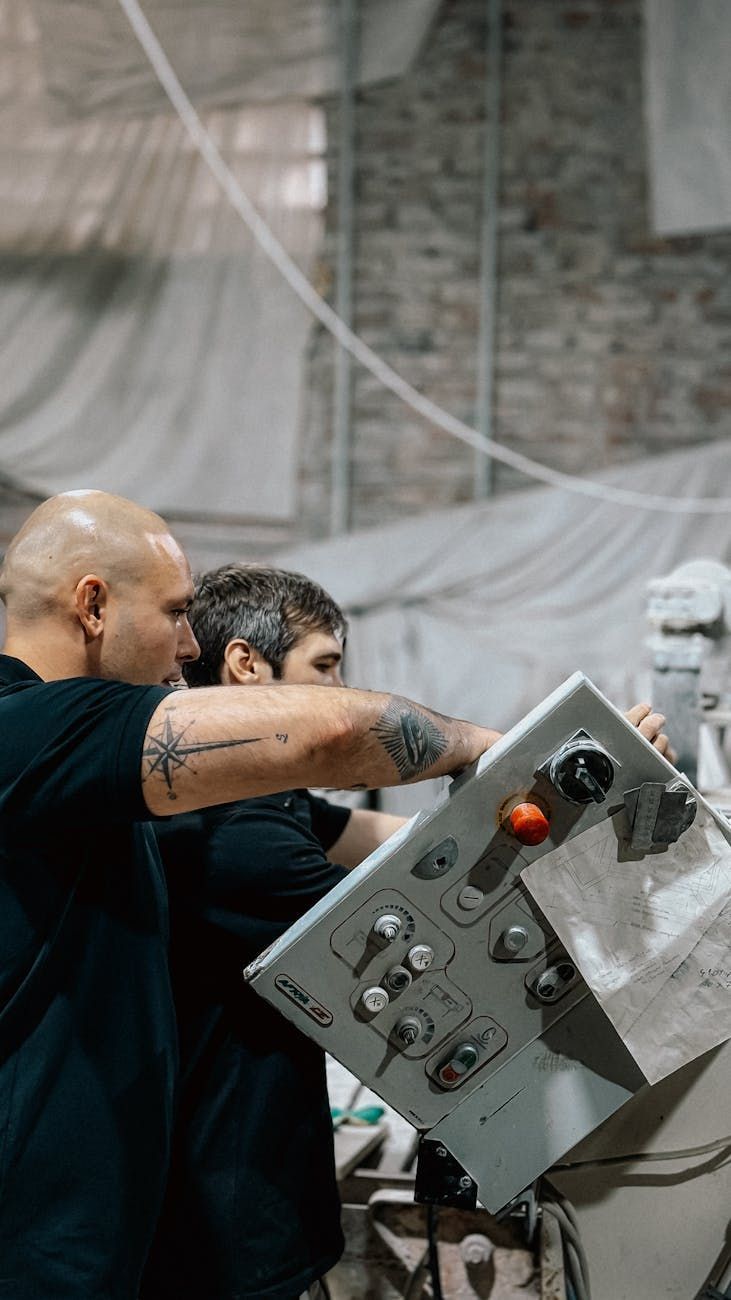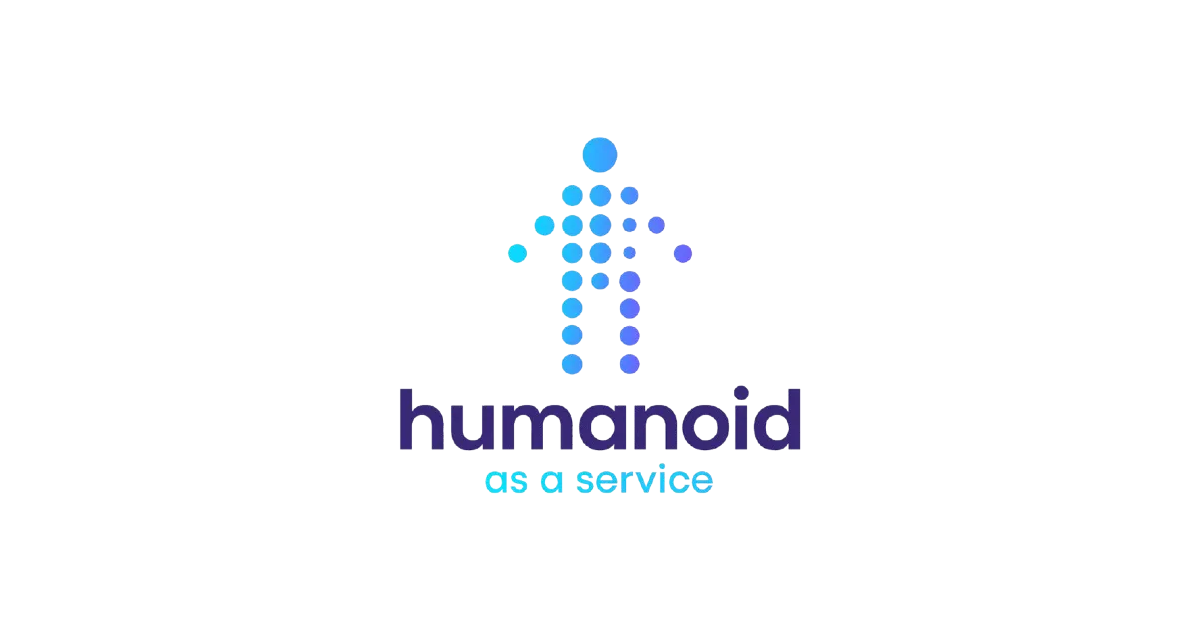Strong Wealth Solutions
Experience Incredible Workforce Automation Benefits for Growth
If you’ve been thinking about how to propel your business to new heights in productivity and innovation, it might be time to explore how workforce automation benefits you and your team. As a forward-thinking executive or business leader, you’ve heard the buzz around artificial intelligence, robotics, and process automation. But what does it all mean for your day-to-day operations? This post provides a clear, friendly guide to help you understand the potential, tackle the challenges, and embrace the exciting future of automated workforces.
The ultimate goal is to reduce repetitive tasks, empower people to tackle higher-level responsibilities, and help your company adapt quickly to market changes. Along the way, you’ll discover practical tips on aligning your strategic vision with advanced technology solutions. Let’s be honest, making these decisions can feel a little daunting, but once you see how automation can reshape your workflow, you’ll likely wonder why you waited so long.
Below, we’ll show you how to foster a flexible culture, implement automation strategies safely, and measure results. We’ll also introduce you to Humanoid as a Service (HaaS), a resource dedicated to helping you maximize gains from AI-powered solutions without losing focus on your people. Ready to dive in and see what’s possible? Let’s walk through everything step by step.
Discover workforce automation potential
Thinking about automation feels different than actually seeing it in action, doesn’t it? Many organizations talk about robotics software, automated data capture, or streamlined HR processes. But it’s not always clear how those changes fit into your big-picture strategy. In reality, automation can spark a wave of transformation across all levels of your organization, from back-office tasks to frontline operations.
When you boost efficiency through automated systems, you free up your team for more rewarding projects. That might mean your data analysts get more time to explore advanced modeling, or your sales reps concentrate on building relationships rather than manual data entry. The result is a workplace that’s more agile, fulfilling, and ready for rapid growth.
Streamline repetitive tasks
One of the first steps many companies take toward automation is to tackle monotonous, repeated activities. If your employees spend hours on manual data entry, monthly reporting, or email follow-ups, it’s time to offload some of that workload to a digital helper.
- Automated tracking: Let software handle inventory control and routine auditing. This dramatically reduces human error and flags discrepancies instantly.
- Email scheduling: Automate repeated email campaigns so your marketing team can invest energy in creative strategy, instead of copying and pasting info from spreadsheets.
- Simple data analysis: Deploy AI-driven tools to crunch numbers and forecast outcomes. When employees access real-time insights, they can focus on business improvements.
With routine tasks streamlined, you’ll avoid burnout from repetitive “busy work.” More importantly, you’ll unlock your employees’ creativity and give them room for tasks that require human judgement, empathy, and innovation.
Enhance decision-making speed
Ever feel like important decisions get stuck in a bottleneck, forced to wait for endless data analysis or manual sign-off? Automation can fix that by:
- Gathering data from multiple sources in a fraction of the time.
- Placing specific triggers that alert the right people when a metric surpasses a threshold (like cost overruns or sudden spikes in customer requests).
- Generating automated reports that pair data with recommended actions, guiding teams toward faster decisions.
When executives and team members have instant access to clean, organized data, you shrink that frustrating gap between analyzing a problem and implementing a solution. Quick decisions become the norm, and your business stays steps ahead of market shifts.
Implement strategic planning
Workforce automation isn’t something you just “set and forget.” It requires a roadmap that clarifies objectives, outlines the resources you need, and identifies any cultural challenges you might face. A solid plan stops you from chasing shiny technologies that don’t align with broader goals.
A strategic approach helps you lay out measurable objectives. Maybe you’re hoping to reduce operational expenses by 15 percent, or you want your customer-resolution times to drop by 40 percent. Setting those targets gives direction to your efforts, and it also helps you evaluate whether the solutions you pick genuinely move the needle.
Assess current operations
No two companies are the same, so it’s essential to evaluate your existing processes. This lets you see where automation will have the greatest impact. Perhaps your payroll process is outdated, or maybe your supply chain is rife with manual sign-offs. Gathering this data now prevents wasted effort on automating areas that don’t truly need to change.
- Survey your team: Ask employees which tasks consume the most time or cause the biggest headaches.
- Map your workflows: Visualize how information flows between departments. Identify bottlenecks, repetitive steps, and gaps for improvement.
- Check your budget: Consider both short-term costs and long-term savings. This ensures you implement solutions that deliver a solid return on investment.
By taking stock of your current setup, you create a strong starting point. It also helps you identify potential roadblocks, like outdated hardware or siloed data systems that need retooling.
Spot high-impact areas
Prioritizing the right tasks or departments maximizes your results. If manual invoice processing is costing you thousands of hours a year, focus there first. If your sales pipeline is bursting with leads that need one-on-one follow-ups, consider using AI chatbots or automated lead-qualification tools.
Some automation projects promise quick wins, such as implementing a scheduling tool for employee shifts. Others might require larger-scale changes, like deploying advanced robotics in manufacturing lines. Knowing your priorities and how each one aligns with broader business goals helps you roll out solutions systematically.
Foster a flexible workforce
It’s normal for employees to wonder if automation means robots will do everything. But let’s be honest, you’ll always need the human touch for creative tasks, empathy-driven work, and advanced problem-solving. By involving your workforce from the start, you reduce anxiety, fuel curiosity, and ensure everyone’s on board with the transition.
In many cases, the best results come from a blend of advanced technology and well-trained people. When you combine human judgment with AI’s ability to handle repetitive tasks, you get a resilient system that can pivot quickly. You also nurture a workplace culture that values learning, which sets the stage for continuous growth.
Encourage upskilling and reskilling
Automation often shifts job requirements. Rather than letting employees fear for their roles, offer them clear paths for learning new skills and taking on higher-level responsibilities.
- Provide training resources: Give people access to online courses and workshops. Focus on areas where technology frees them to experiment and excel.
- Promote knowledge-sharing: Encourage employees to show each other new tricks. This builds camaraderie and sparks a sense of shared achievement.
- Align new roles: When repetitive tasks are automated, highlight the new opportunities—like data interpretation, strategic analysis, or creative problem-solving.
Upskilling ensures that your team stays productive and engaged, while reskilling brings fresh possibilities for people who want to pivot into different roles. Plus, as your automated systems evolve, your workforce will keep pace, relieving you of the pressure to hire externally for every new skill set.
Promote cross-functional teams
Automation can knock down departmental silos if you let it. By forming cross-functional teams, you encourage finance, marketing, logistics, and other departments to share insights and coordinate around new tools.
- Joint projects: Pair people from different areas to implement or test automation software.
- Communal knowledge base: Keep an internal wiki or shared repository for best practices and lessons learned.
- Address friction points: If processes are handed off between teams, identify where automation can smooth the transition.
When various departments learn how to apply these tools together, you tear down barriers, improve communication, and streamline projects. Collaboration also reduces the risk of one team feeling left behind or overshadowed by the changes in another.
Embrace new technology
Staying ahead of trends means not just adopting new technology but making strategic decisions around each tool. You can’t automate everything at once, nor should you. Instead, pick and choose solutions that align with your core mission. This measured approach ensures sustainability.
Businesses often start with simpler systems like automated email workflows or robotic process automation for data entry. From there, you might move on to AI-driven analytics, advanced robotics for assembly lines, or chatbots that improve customer service. Each step brings you closer to a streamlined, real-time work environment.
Analyze ROI carefully
Before rolling out a technology, do a realistic cost-benefit analysis. That means counting the cost of software licenses, training, and potential process overhauls against the likely savings in time, accuracy, and labor. Take a broad view of costs too, factoring in hardware updates or subscription fees if needed.
If you foresee that certain tasks will vanish or morph, be explicit about it with your team. When employees understand where automation is headed, they can plan accordingly, whether that means shifting roles or focusing on advanced tasks.
Start with pilot programs
Instead of upending an entire department overnight, run small pilot programs to gauge success metrics and gather feedback. Let’s say you set up a pilot project to automate a segment of your customer onboarding. You track metrics like time to completion, error rates, and customer feedback. If the pilot goes well, you have real-world data to show stakeholders. Then, you can expand with confidence.
- Define success criteria: Set KPIs to measure time savings, error reductions, or satisfaction scores.
- Gather feedback regularly: Ask project members how the automation might improve.
- Scale gradually: Once results confirm your approach, roll out to more employees or departments.
Pilots are a powerful way to minimize risk. They also help you build a case study for further automation initiatives, turning skeptics into supporters as they see success firsthand.
Collaborate with Humanoid as a Service
When you’re exploring artificial intelligence and advanced robotics, it’s vital to partner with a reliable resource that understands your unique goals. That’s where Humanoid as a Service, or HaaS, comes in. The focus is on melding AI-driven process improvements with a human-centered approach, ensuring that people remain at the core of your organization.
HaaS can guide you in selecting, implementing, and scaling solutions at a pace that suits your immediate needs and long-term vision. Beyond technology, they prioritize knowledge transfer, helping your teams gain the skills and confidence to manage automated systems effectively. With expert consultants by your side, you can avoid expensive missteps and move quickly toward your desired results.
Some ways you can team up with HaaS:
- Comprehensive planning: Work together to identify the projects that deliver the fastest wins and best match your strategic objectives.
- Tailored solutions: Not all businesses need advanced robotics. HaaS can help you pick software or hardware that fits your budget and growth trajectory.
- Ongoing support: From pilot programs to full-scale rollouts, you’ll have a knowledgeable team ready to address hiccups and refine your approach.
Ultimately, it’s about partnering with a company that values your vision. Humanoid as a Service works to keep you in the loop every step of the way, so you never feel blindsided by complex, tech-heavy jargon. If you’re ready to explore these opportunities, you can book a free consultation or simply Get started here: https://www.humanoidasaservice.com/get-started.
Optimize adoption and engagement
No matter how brilliant the technology, it won’t deliver its full promise unless your employees actively embrace it. This hinges on communication, on clear explanations of how changes will affect each person’s day-to-day responsibilities. In many cases, your staff will be relieved to offload tedious tasks, but sometimes, fear of the unknown can overshadow the positives.
Begin by keeping everyone informed about upcoming transitions and timelines. Explain not only what’s changing, but also why. Emphasize that automation liberates employees from mind-numbing chores, freeing them for strategic, creative work. Highlight success stories inside and outside your organization. Show employees that a well-executed automation strategy amplifies their impact, rather than diminishing it.
Involve teams in decision-making, so they have a say in how automation is shaped to fit the company culture. You might set up a volunteer committee or a cross-departmental task force to gather input and pilot new systems. Whenever possible, celebrate quick wins and early adopters, demonstrating that open-mindedness and experimentation pay off.
Measure performance consistently
Data doesn’t lie, and it’s your ally in confirming whether your automation projects deliver the workforce automation benefits you hoped for. No matter how small or large the automation project, define key performance indicators (KPIs) early on and then track them regularly.
- Efficiency metrics: Monitor whether tasks take fewer hours to complete or if employees can now handle more volume in the same timeframe.
- Quality benchmarks: Check for changes in error rates, rework, or customer complaints that might signal issues with the new automation.
- Employee satisfaction: Survey your teams to see how the new arrangements have affected morale and job engagement.
As time goes on, you’ll likely spot additional or unexpected gains, such as faster onboarding experiences or improved supplier relationships. That’s the beauty of an iterative process. Data gives you the direction to refine or reconfigure, ensuring continuous improvement.
If, for instance, you introduce advanced robotics to one assembly line, track not only higher output but also safety incidents, staff feedback, and even power consumption. A robust measurement framework shows precisely how well the automation aligns with your goals, and it helps you decide whether to expand those changes to other areas.
Address common concerns
From job security worries to steep learning curves, concerns are natural whenever traditional processes evolve. Acknowledging these from the get-go builds trust with your employees. It also positions your leadership team as open, transparent, and dedicated to finding balanced solutions.
- Job security: Reassure your staff that automation aims to eliminate drudgery, not people. Emphasize upskilling opportunities and how new roles can emerge.
- Complexity: Make the learning process smoother with user-friendly tutorials, ongoing training, and dedicated support.
- Budget: Be candid about up-front costs and how they compare to long-term gains.
- Timing: Some employees might be ready to embrace automation yesterday, while others need more time. Strive for a realistic rollout schedule that doesn’t overwhelm your team.
When you tackle these concerns directly, individuals feel heard. They see that automation is part of a larger vision—one that respects and values their contributions. Over time, you can turn skeptics into advocates, especially when they witness improvements in workload balance and career growth.
Scale for long-term success
If the initial wave of automation proves successful, it can be tempting to jump flat-out into more ambitious projects. But scaling too fast can cause hiccups. For instance, you might have an advanced AI system analyzing your logistics data but zero strategy for how to adjust your supply chain accordingly.
The key to scaling is methodical planning. Expand your automation footprint in increments, and test each phase thoroughly. For example, if you started automating repetitive HR tasks, you might next focus on trimming down your internal IT ticketing workflows. Each new project should link back to a broader roadmap, ensuring that every step you take is part of a cohesive vision.
Don’t neglect the human aspect. Each scaling phase might require a new wave of internal marketing, training, and feedback sessions. The more consistently you engage your workforce, the easier it is to roll out advanced technologies across your entire organization.
Some strategies for successful scaling include:
- Incremental upgrades: If the pilot automation tool shows promise, invest in more robust versions once you’ve proven the concept.
- Interdepartmental coaching: Have experienced teams mentor other departments embarking on similar rollouts.
- Tech partnerships: Consider specialized vendors or consultancies for each project phase, ensuring you have the right technical depth at every stage.
Find your next step
Automation isn’t a gimmick, but a cornerstone of modern business evolution. From freeing employees to tackle strategic tasks, to enabling lightning-fast decision-making, the workforce automation benefits you gain can truly redefine your company’s future. It starts with a thoughtful plan, a focus on human capital, and the willingness to try new solutions.
If you’re ready to take the next step, consider collaborating with Humanoid as a Service. Their expertise ensures you don’t just implement advanced tools, but integrate them in a way that enhances your team’s capabilities. You can book a free consultation or Get started here: https://www.humanoidasaservice.com/get-started to explore a tailored blueprint for boosting innovation in your own organization.
Embrace automation at a comfortable pace, keep your employees engaged, and measure results to refine your approach. Combine these pieces, and you’ll be well on your way to an agile, future-facing enterprise that thrives on continual growth.
SHARE THIS POST:
Leave A Comments:
Our Recent Posts:
Transform Your Workforce
Experience the future of work today. Book a pilot project or demo to see how humanoid automation can elevate your operations.








